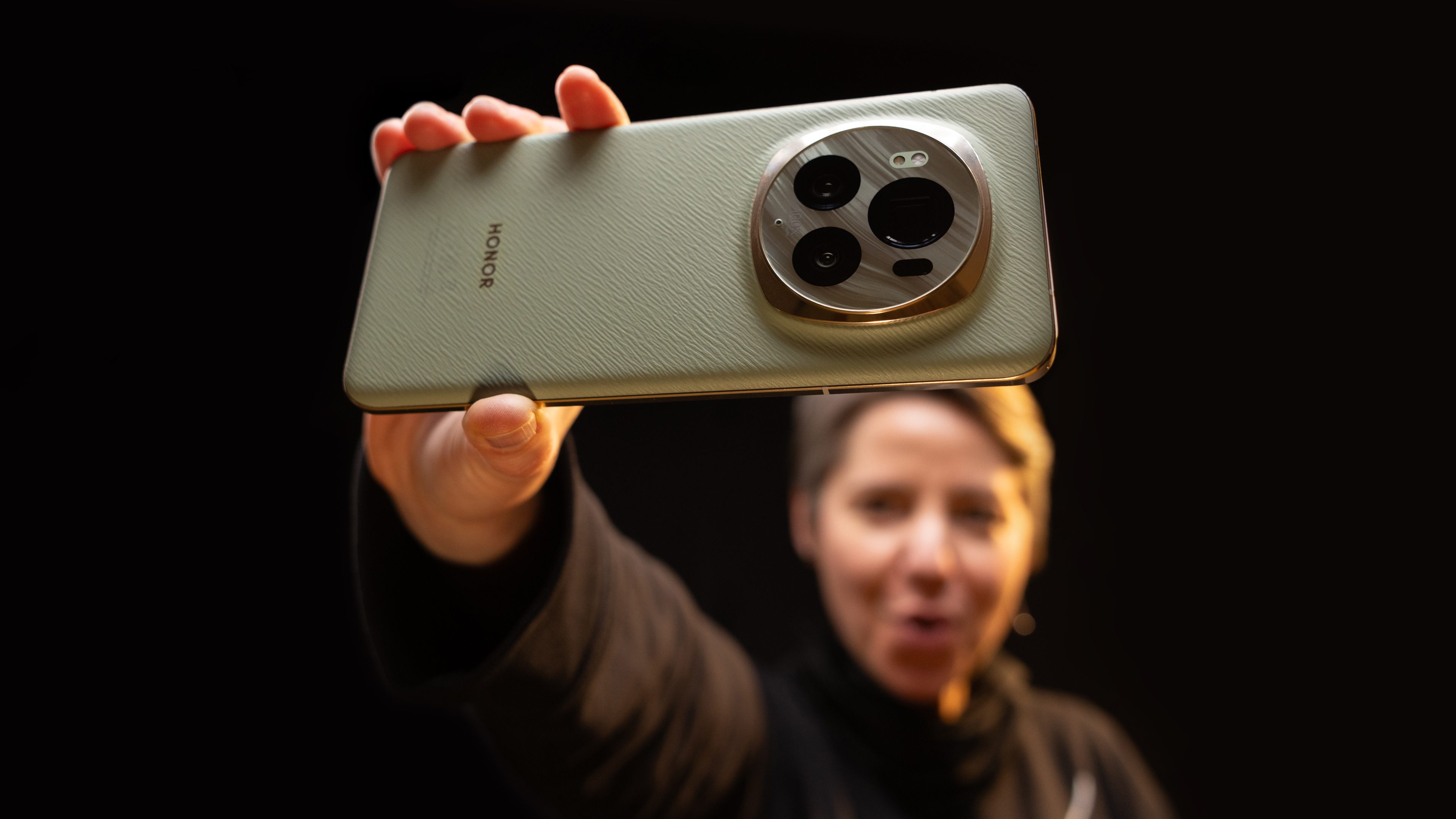
Honor has launched a new smartphone, the Magic 6 Pro, featuring a new camera set and a special selection of AI features. We had the chance to get hands-on experience with the device during MWC 2024, and here are our first impressions.
Honor Magic 6 Pro release date and price
At the Mobile World Congress in Barcelona, Honor unveiled its premium flagship for the year, the Magic 6 Pro. This smartphone, available in Black and Epi Green, features a single memory configuration of 12 GB of RAM and 512 GB of internal storage, with a price tag of €1299.90 (around $1,409).
However, Honor is offering a special launch promotion in Europe, providing customers with a €300 discount through a coupon on their website. This offer lowers the price of the flagship to €999.90 (approximately $1,084).
The Honor Magic 6 Pro won’t be available in the United States. Nonetheless, it may be feasible to procure this mobile device through unofficial channels or online marketplaces.
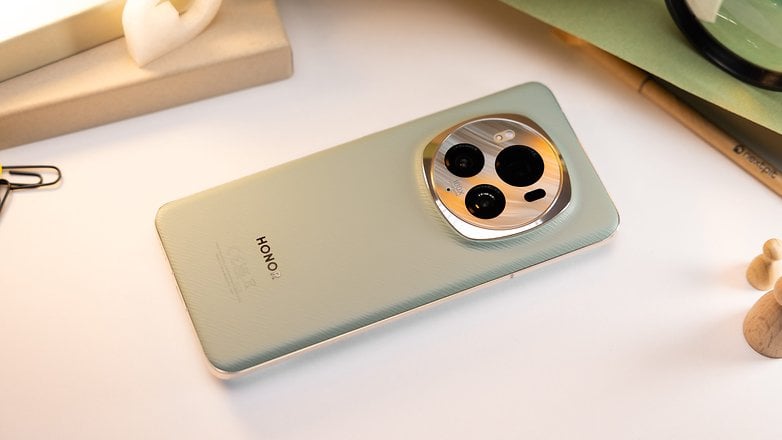
Design and Display
Last year,
I reviewed the Honor Magic 5 Pro and must say, Honor does not shy away when it comes to design. It’s mostly original, with some bold choices, such as the device having a back case made of oxo-biodegradable plastic, also known as EPI—a type of plastic that decomposes faster and more completely. However, it feels really slippery, and I personally recommend using it with a protective case, given the phone’s large size
.
Pros:
- Original design.
- Bright and vibrant display.
- Biometric sensors are flawless.
- IP68 certified.
- IR blaster on board.
Cons:
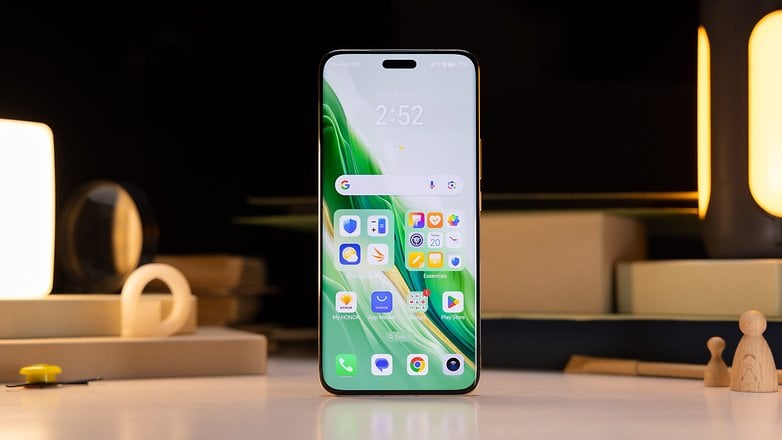
Honor has upgraded the series to a larger 5,600 mAh battery, and it increased the thickness of the phone to 8.9 mm. They’ve also made sure it’s dust and water-resistant, thanks to its IP68 rating.
The phone boasts a big 6.8-inch curved screen that looks great from any angle. The build combines an aluminum frame with a plastic back, and the screen blends in seamlessly with almost any edges.
The display has a pixel density of 453 ppi and a refresh rate of 1-120Hz. It has a peak brightness of 5000 nits, which is ideal for use under bright sunlight.
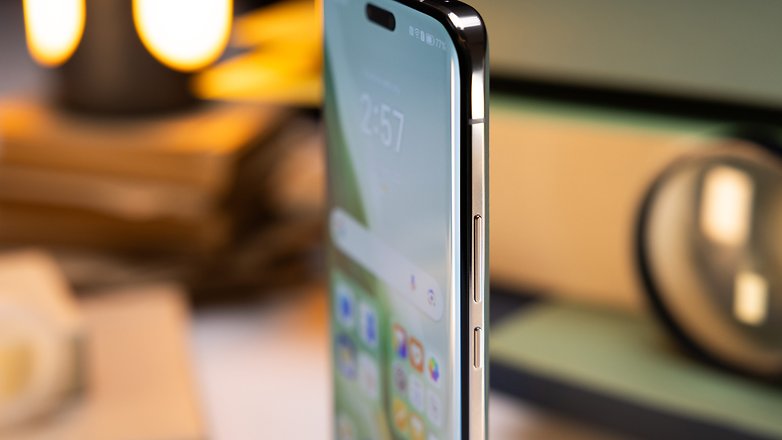
The Magic 6 Pro offers a 20:9 aspect ratio, making watching videos or playing games like Genshin Impact a real treat because of the excellent display and performance.
Just like last year, the phone includes an IR blaster for controlling other devices with infrared. A noticeable update is the front camera’s move to the middle of the screen, which looks more modern.
Unlocking the phone is quick and easy with the fingerprint sensor at the bottom of the screen, and Honor’s 3D face unlock is both fast and reliable.
Software and Performance
When it comes to speed and power, the Honor Magic 6 Pro is equipped with the latest and greatest Snapdragon 8 Gen 3 chip from Qualcomm. It comes in just one version, which has a generous 12 GB of RAM and a huge 512 GB of storage space. In the software department, Honor has added its own special touch, MagicOS 8.0, on top of
Android 14
.
Pros:
- OS runs on top of Android 14 features.
- Performance that is consistent and trustworthy.
Cons:
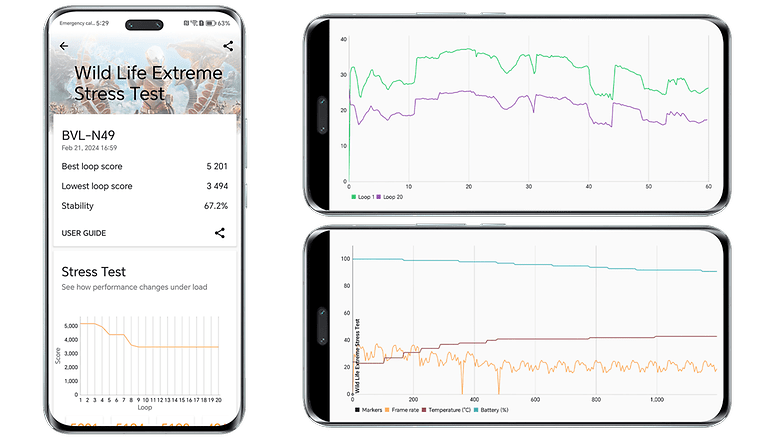
Even though this is only a hands-on, I already had some time with the device to give a detailed look at the benchmark test results, which were done in the default battery mode.
The Honor Magic 6 Pro’s impressive performance puts it ahead of the pack in the premium smartphone space. The benchmark results from the 3DMark Wild Life Extreme Stress Test reveal that the Honor Magic 6 Pro leads the pack with the highest ‘Best loop’ score of 5,201. This indicates that when it comes to handling graphically intensive tasks, the Honor Magic 6 Pro has the muscle to outperform its rivals.
| Honor Magic 6 Pro (Snapdragon 8 Gen 3) |
OnePlus 12 (Snapdragon 8 Gen 3) |
Galaxy S24 Ultra (Snapdragon 8 Gen 3 for Galaxy) |
Apple iPhone 15 (A16 Bionic) |
Pixel 8 Pro (Tensor G3) |
|
|---|---|---|---|---|---|
| 3DMark Wild Life Extreme Stress Test |
|
|
|
|
|
| Geekbench 6 |
|
|
|
|
|
Despite a drop in its ‘Worst loop’ score to 3,494 under continuous stress, the Honor Magic 6 Pro still holds a significantly higher performance floor compared to several competitors, reflecting its robust sustained performance capability. That said, the Magic 6 Pro has a 67.2% stability on the 3DMark Wild Life Extreme Stress test.
In Geekbench 6 benchmarks, the Honor Magic 6 Pro boasts a single-core score of 2,258 and a remarkable multicore score of 7,064, outperforming the OnePlus 12 and Pixel 8 Pro significantly in multitasking and complex tasks.
Despite the competitive scores of the Samsung Galaxy S24 Ultra and the higher single-core score of the Apple iPhone 15, the Honor Magic 6 Pro stands strong in multicore performance. Its excellent graphical and CPU performance, particularly in multicore processing, establishes it as a solid choice for those seeking a device with top-tier graphical and processing power.
On a more practical use, the Magic 6 Pro was like cruising in a high-performance sports car without hitting any bumps. It ran smoothly, whether I was just scrolling through apps or deep into gaming marathons with Genshin Impact—no hiccups or glitches to spoil the fun.
Software: AI operating system
Let’s delve into the operating system aspect. Initially, my impressions of the MagicOS user interface are not entirely positive. It strikes me as an awkward hybrid, lacking the polished experience of iOS while falling short of Android’s versatility—a sentiment I echoed last year when assessing its predecessor. Moreover, its resemblance to Huawei’s EMUI and the excessive bloatware remain issues for me.
On a brighter note, Honor is determined to distinguish itself in the realm of AI. The company is introducing some innovative features powered by its proprietary AI technology.
The debut of the Honor Magic 6 Pro showcases the industry’s first-ever intent-driven user interface. But what exactly does that entail? According to Honor, the MagicOS aims to intuit the user’s needs, significantly simplifying interactions by minimizing the steps to accomplish tasks.
For example, if the device detects an address in an email, it can spontaneously suggest booking a taxi. This illustrates its ability to analyze text, deduce the user’s intentions, and propose suitable actions and relevant apps. This feature is also applied in local video production, underscoring a commitment to privacy and data security by processing all operations directly on the device.

The Honor Magic 6 Pro, powered by the Honor MagicLM, benefits from collaborations with leading tech providers, incorporating the Qualcomm Llama 2 and Google Bard AI models, with alternative versions available for the Chinese market. Enhanced by inputs from hands, voice, and eye-tracking—where the latter predicts user intentions through eye movement—its AI capabilities set a new benchmark for interaction with personal devices, leveraging both cloud and on-device large language models, general and vertical knowledge services, and vast data.
However, all these features remain a promise, as my test device’s MagicOS 8.0 did not include them. Thus, a final test of the phone’s capabilities will have to wait.
Lastly, Honor asserts that the Magic 6 Pro will receive four major software updates and five years of security patches, underscoring their commitment to long-term support.
Honor Magic 6 Pro camera
The Honor Magic 6 Pro features an advanced camera setup. It includes a next-generation Falcon Camera System with a 180-MP periscope telephoto lens offering up to 100x digital zoom and a 50-MP main camera with an adjustable aperture. Additionally, there’s a 50-MP ultra-wide-angle camera
.
Moreover, the phone employs an algorithm and AI Motion Sensing for enhanced photography, supported by a suite of sensors for improved focus and stabilization. Video capabilities include 4K recording at 60 fps.
Pros:
- Versatile camera module.
- The camera software is exquisitely designed to enhance color.
Cons:
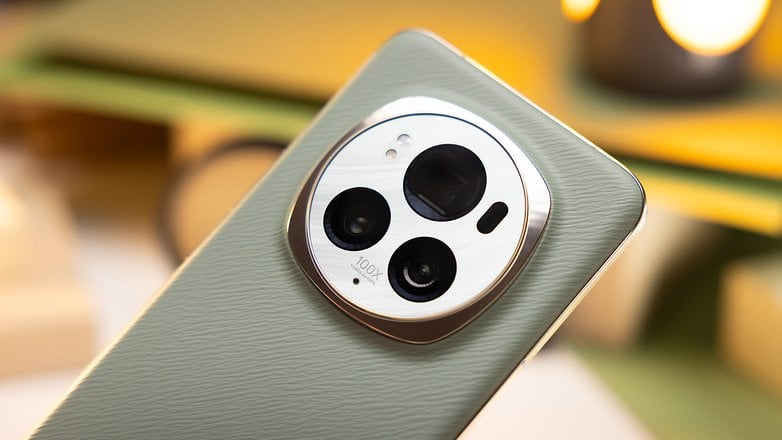
With a 50-MP main camera and an adjustable aperture, the device assures high-resolution images that capture fine details and offer excellent dynamic range. Honor informed us that the new Magic-gen has a 210% better dynamic range than its predecessor, the Magic 5 Pro, which indicates significant improvements in handling various lighting conditions and enhancing image quality.
However, the star of the show here is the native optical zoom capability at 2.5x with a 68mm equivalent focal length. This is further supported by a 2x digital zoom specifically optimized for 135mm sports photography. According to Honor, the camera system significantly enhances light capture, offering 377% more light than the S24 Ultra and 400% more light than the iPhone 15 Pro Max.
The 180MP periscope telephoto camera utilizes a Samsung sensor, although the specific model is not mentioned.
Since this was only a preliminary test, I didn’t use the camera extensively. However, being in Barcelona, I decided to take some photos of one of the city’s postcards: Casa Batlló. What impressed me the most was the camera’s versatility and its ability to enhance the colors in images. Additionally, the details on the façade of the building are so rich that I would consider printing and framing a photo to hang on my apartment wall. This speaks volumes about my satisfaction with the telephoto lens.
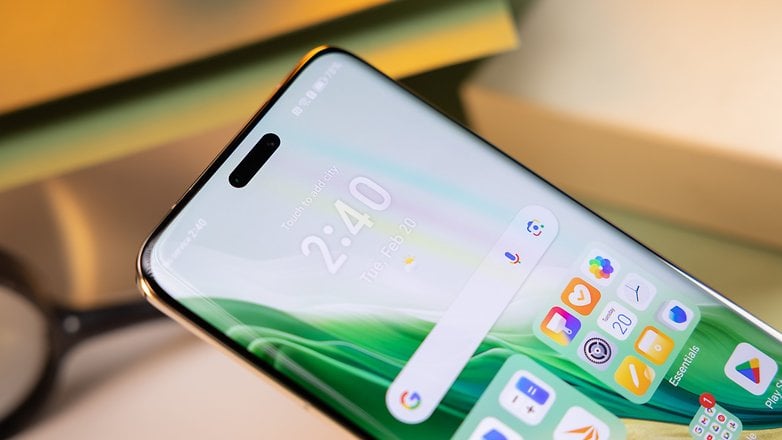
When it comes to the front camera, the Magic 6 Pro features include a 50-MP ultra-wide-angle camera and a 3D TOF (Time of Flight) sensor. For video recording, it supports 4K resolution at 60 frames per second.
This setup is equipped with built-in sensors, including SMA Radar (AF+OIS 2 in 1), a multispectrum color temperature sensor, and a flicker sensor, enhancing the quality and functionality of the front camera for selfies and video calls.
Honor Magic 6 Pro battery
The Honor Magic 6 Pro features a 5,600 mAh second-generation silicon-carbon battery, designed for durability and long-lasting power. This high-capacity battery ensures extended use without frequent recharges, making it perfect for demanding activities like gaming, watching videos, and using intensive apps
.
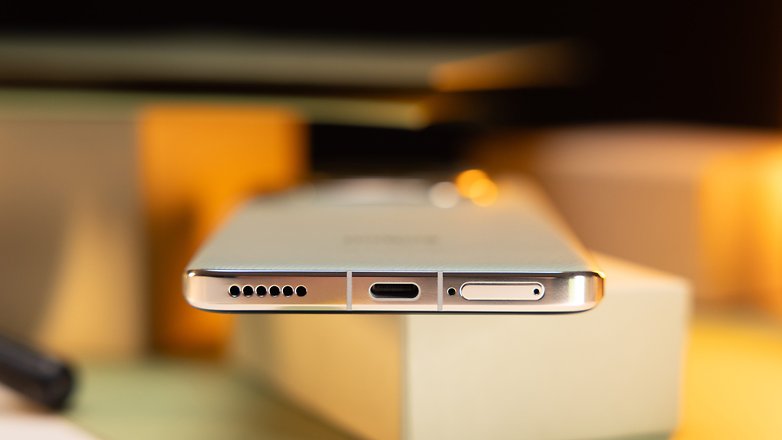
The Honor Magic 6 Pro has a large battery capacity, as well as its proprietary energy management system, which includes a performance-enhancing chip, the Honor E1, that’s meant to cut down on power usage across the device’s operations. The phone is capable of supporting wired charging of 80W and wireless charging of 66W, thereby providing users with swift and convenient charging options.
Unfortunately, I still need more time to provide a better overview of the Magic 6 Pro’s battery life. However, there’s already a drawback: the adapter does not come in the box, only the USB-C cable. Well, at least that was my experience during the unboxing.
Stay tuned for the final review of the device for a more opinionated take on this topic.
Honor Magic 6 Pro technical specifications
| Technical Specifications | |
|---|---|
| Device | |
| Design |
|
| Screen |
|
| Memory | |
| CPU / GPU |
|
| Camera |
|
| Video |
|
| Interface/OS |
|
| Battery |
|
| Audio |
|
| Dimensions & Weight |
|
| Connectivity |
|
Early Verdict
The Honor Magic 6 Pro emerges as a strong contender in the premium smartphone market. It’s packed with the powerful Snapdragon 8 Gen 3 chip, has a robust 12GB RAM, and an impressive 512GB storage. The device dazzles with a 6.8-inch curved display boasting a 120Hz refresh rate and a peak brightness of 5000 nits.
The camera system sets a new standard with a 180-MP periscope telephoto lens, promising unparalleled photography capabilities. Additionally, the integration of AI with MagicOS introduces an intent-driven user interface—although the full potential of these features remains to be seen in future updates.
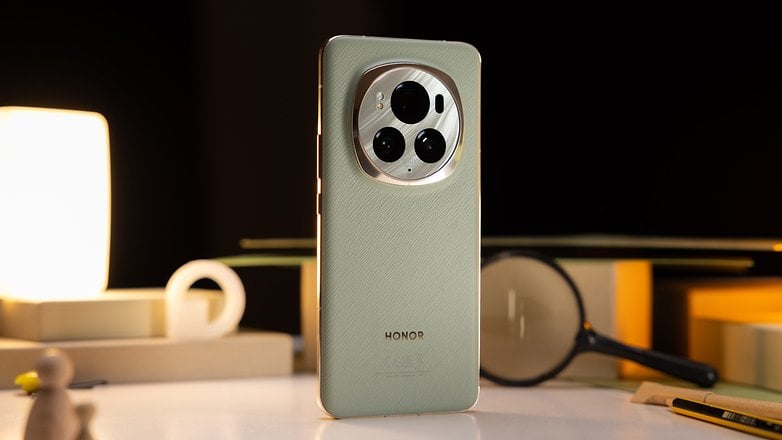
Despite some critiques on the software front, the Honor Magic 6 Pro’s promise of long-term support with four major software updates and five years of security patches reflects a commitment to durability and user satisfaction. The device’s large 5,600 mAh battery and fast charging capabilities underscore its readiness for extended use, although the absence of a charging adapter in the box is a noted drawback.
In summary, the Honor Magic 6 Pro stands out for its exceptional performance and innovative camera technology, marking a significant step forward for Honor in the high-end smartphone arena. Nevertheless, this is not my conclusive judgment, even though I have been using the device ahead of its launch. I believe the phone must provide further insights in a comprehensive review to fully ascertain whether it truly represents the advanced flagship Honor claims it to be.
What do you think?






















